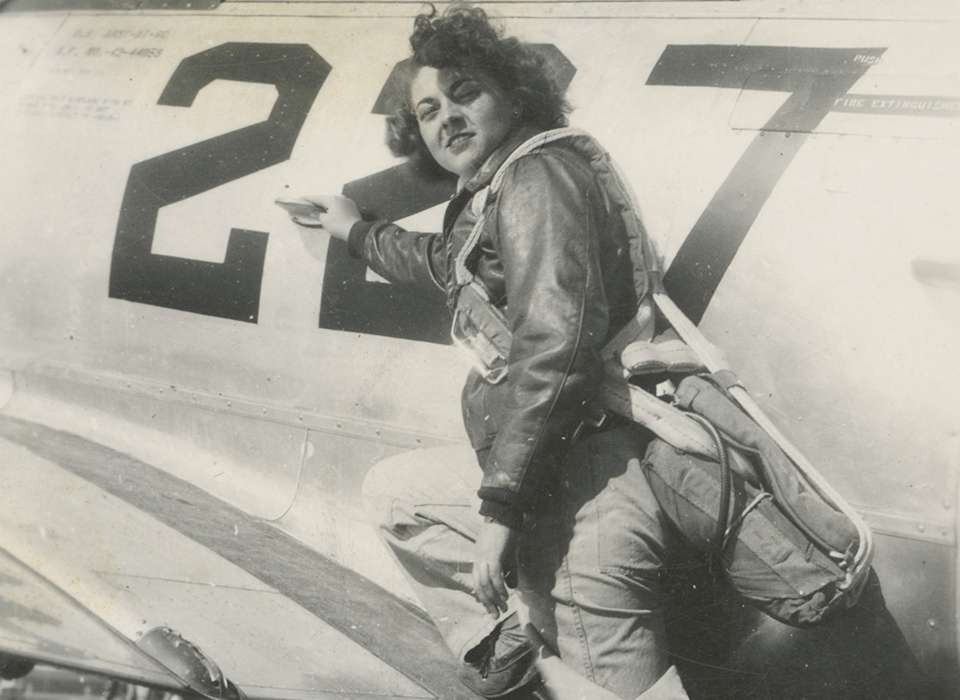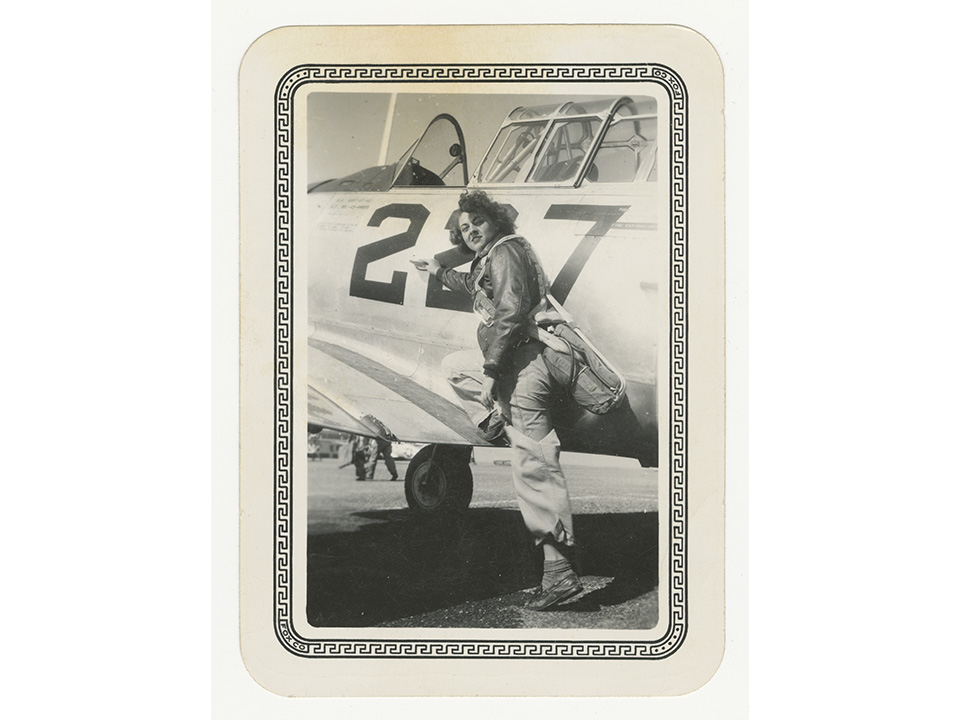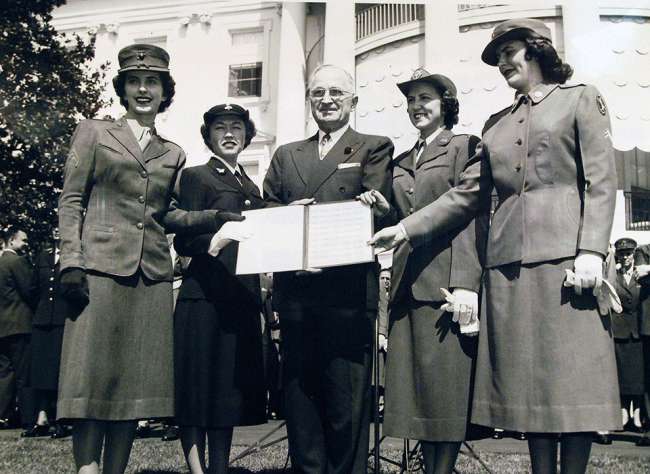Even while they may have stepped out of cockpits, hung up their uniforms, and put down their rivet guns, the generation of women who worked and served in World War II has gone to inspire future generations into the present day. Like their male counterparts, they stepped into leadership roles in their communities, churches, schools, and families, bringing with them the skills and life experiences they gained during the war.
Among women who volunteered for the war effort, the WASP (Women Airforce Service Pilots) were an elite group. Between 1942 and 1944, when they were disbanded, only 1,100 women trained as pilots with the WASP. They were a groundbreaking group of volunteers who defied expectations and gender bias to apply their skills in service for their country during the war.
A determined, young Dorothy Britt (later Mann) from the small west Texas town of Plaska, suspended her studies at the University of New Mexico before her junior year so that she could secure a pilot's license and the necessary hours to apply to the WASP organization on the day she turned 21. She worked for the Civil Air Patrol and purchased a small engine plane with a friend, so that they could train and gain flight time. WASP recruits had to be at least 21, possess a pilot’s license, and have 500 hours of flight time. Finally, Britt met the requirements and was accepted as a trainee in the WASP in November 1943 for the class of 44-4.
Britt didn’t have to go too far from home to begin training with the WASP. Avenger Field in Sweetwater, Texas, where all WASP trained by 1943 was under 200 miles from her hometown. The pilot-volunteers trained on military aircraft under Jacqueline Cochran, Director of Women Pilots. Britt was so petite that she had to use pillows to prop herself up in the cockpits in order to reach the pedals. In fact, the equipment and gear available for the women was often too large and had to be modified or had to be made personally for them.
After graduation, Britt stayed in Texas with her first assignment to Moore Field in Mission, Texas, home to the 2529th Army Air Force Base Unit (Pilot School, Advanced Single Engine). She then transferred to Love Field in Dallas, Texas, which served as headquarters for the US Army Transport Command. There she ferried refurbished planes to other airbases. This was one of the primary duties of the WASP. Once at the new base they were responsible for finding transportation home, along with all of their gear. When flying on civilian transports home, Britt and other WASP enjoyed the looks on the faces of other passengers when they boarded with their parachutes.
Britt also tested new planes for stability and safety before they could be turned over to the male pilots to take into action overseas. WASP tested out and flew nearly every type of military aircraft and logged 60 million flying miles in their flight duties on the Home Front. Dorothy and the other WASP carried out dangerous assignments like towing targets behind their planes for gunnery training.
The WASP carried out these tasks in a hostile atmosphere. Not everyone wanted the women to succeed. There was even some resentment from male pilots who wanted the women’s stateside jobs, rather than overseas combat duty. And as more male pilots were trained and others returned from overseas, the WASP was disbanded and the women released from duty. Some were able to get contract work with Air Transport Command or flying in other capacities, but many returned to prewar occupations or began new lives in new roles. It wasn’t until 1977 that the WASP were granted retroactive military status.
Britt married A.C. Mann in February 1945 and started a family. She and her husband opened a railroad construction business, Mann, Inc. in Centralia, Illinois, which she took over in 1973 when her husband passed away. Again, Britt found herself in charge in a male-dominated field. She became known as a shrewd negotiator and hard-working business woman. She died August 11, 1998 after a fight with cancer.
The legacy of Britt’s service was ever present in the lives of her family members, even if it was not recognized as such. Some of the qualities that likely inspired her to volunteer to serve her country in the air carried on into her later life and defined her, in particular, to her grandchildren, with whom she lived for a long period of time. Britt’s grandson, US Air Force Lt. Col. W. Crosby Parker, wrote:
“My Grandmother Dot had a quiet confidence that she exuded in everyday life. She always appeared to know exactly who she was, what she was doing, and where she wanted to go.”
Grandson Commander J. Shannon Parker, a retired Naval aviator, also remembered Britt, “she was never one to boast about what she had done or was doing. She would just get the job done...When I was young, I knew about what she had done, but she made it seem so matter of fact.”
In November 2019, Britt’s family, led by daughter Connie Parker, shared a collection of artifacts with The National WWII Museum, our first significant artifact collection from a WASP. Because the legendary group has many well-deserved fans, we would frequently receive comment cards about the lack of representation of these pioneers. Although we had been able to conduct and record oral histories with WASP (The Museum’s Digital Collections features stories with five WASP: Helen Snapp, Maxine Flournoy, Blanche Gangwere, Geri Nyman, and Bernice Haydu), and had featured interviews and photographs in our exhibits, we had no objects to display that were connected with a woman pilot. Mann’s collection includes her WASP wings, WASP A-2 jacket, flight suit, knee plotting board, and many documents.
Parker reported that the donation process and the visit to The National WWII Museum strengthened interest in Britt’s story among the youngest generation of family members. She wrote, “The experience that those grandchildren [Britt’s great-grandchildren] had afforded them a real presence of her in their young lives. They can now talk about ‘Grandmother Dot’ as if they themselves did know her. When great-granddaughter Ellis dressed up as a pilot for Halloween, she corrected those who asked if she was Amelia Earhart with, “No, I am Grandmother Dot, a WASP in WWII.”
Watch the livestream of our past event: The WASPs: The Women Airforce Service Pilots, Dorothy Mann, and Their Lasting Legacy.
Cite this article:
MLA Citation:
APA Citation:
Chicago Style Citation:









